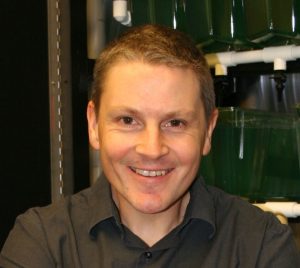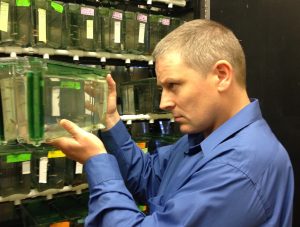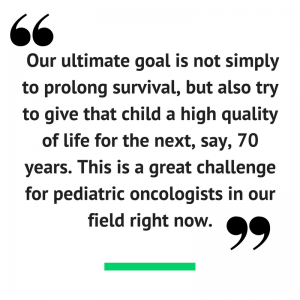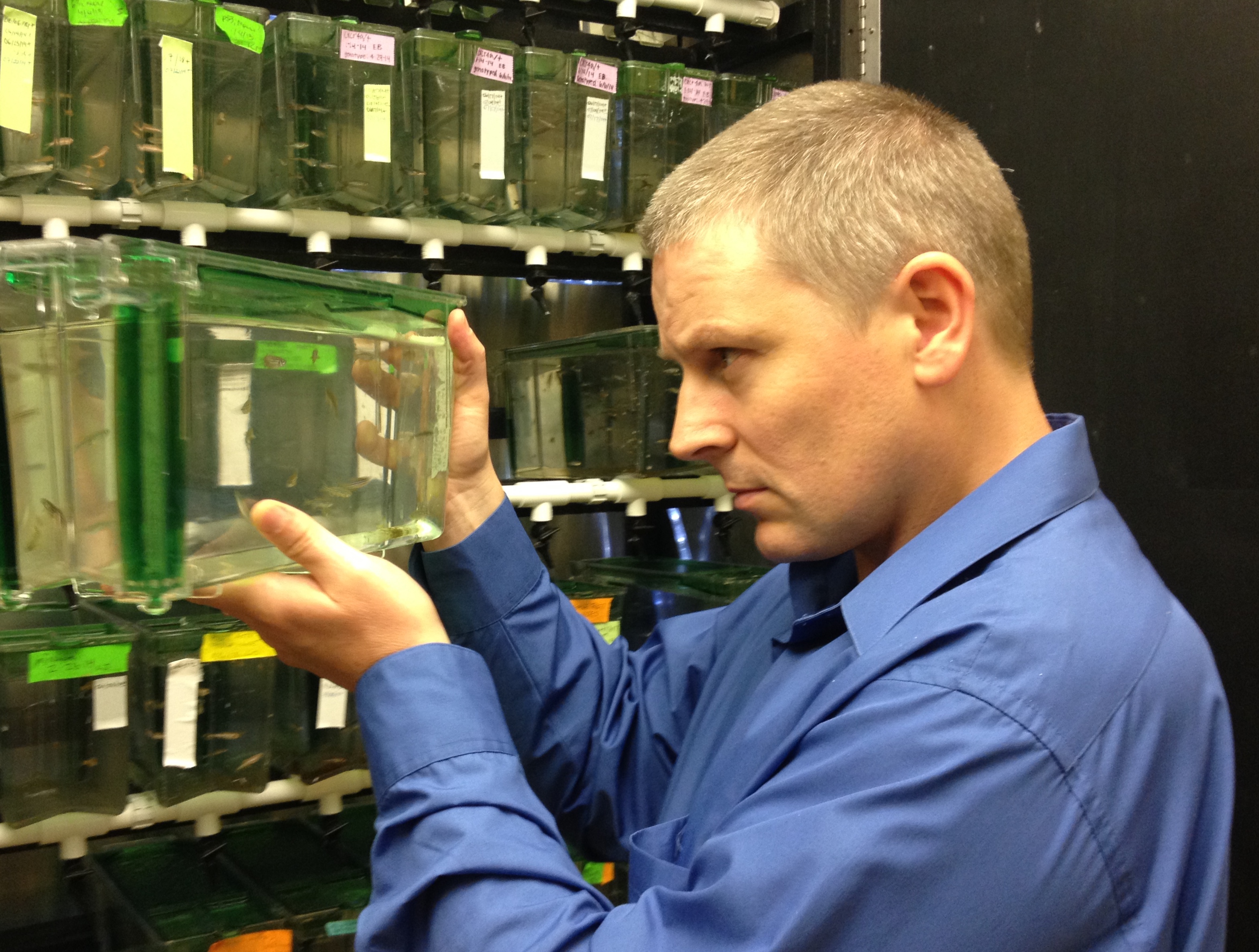Rodney Stewart, Ph.D., is an assistant professor in the Department of Oncological Sciences at the University of Utah and a Huntsman Cancer Institute (HCI) investigator.
JoVE caught up with Dr. Stewart to get an insight into his work involving pediatric oncology and learn about his goals in the path to cure childhood cancers.

Q. Could you highlight your overall research focus?
A. My lab places emphasis on studying pediatric cancers because normal developmental processes are often subverted by the formation and progression of childhood tumors. A focus for our group is understanding how normal cell migration mechanisms promote cancer invasion and distant metastasis, which is very difficult to treat and represents a significant clinical challenge.
My lab also studies mechanisms driving pediatric brain tumor formation and invasion. With brain tumors, distant metastasis is often not the problem. The primary challenge is the local invasion of cancer into normal brain tissues, which makes it very difficult to surgically resect and treat with conventional treatments, such as radiation.
So, understanding how cells, either in an embryo or a tumor, move through the brain, is an important clinical issue to understand and to treat.
Q. Tell us a little bit about your JoVE publication. Which area of your research did you highlight in this particular Video Article?
A. The method that was published in JoVE Video Journal is a way to examine growth and invasion of brain tumors in a timeframe that is practical for experimental reasons (five days). In this Video Article, we explain a transplant technique which allows us to identify genetic mechanisms or drugs that impact the ability of tumor-invasion and growth. Besides having a realistic timeframe, the other attribute of this method is that it is scalable. This allows us to test multiple drugs in hundreds of zebrafish in a single day.
The ultimate goal here is to be able to use that technique to take primary patient samples from the pediatric clinic, be able to put the cells in hundreds of animals, and within five days, have readouts of potential progressiveness of the tumor, and even drug responses. So, this is now getting into more personalized oncology. We are not there yet, but that is the downstream goal of what we’re trying to do.
Q. What made you decide to publish this method in video format?
A. The method requires some technical expertise. It was crucial to show somebody the video of exactly how we line up the zebrafish embryos and how far we inject the needle into the brain. If you inject it too far, you damage the healthy brain tissue, and that could impact the readings you have with invasion or drug response later on. So it’s a delicate procedure that is best shown through a visual method.
Many other researchers had asked me in the past if they could visit my lab to learn this method. It’s really great that now I can reference the JoVE Video Article and say, “Oh, just go look at the video, because we have it all there.” These researchers, inquiring about the method, find that the video article is a great resource.
Q. Who might benefit from your research publication in JoVE Video Journal?
A. Researchers who are currently interested in this method range from immunologists, developmental biologists, and cancer biologists.

Q. Have you or any of your lab members used other JoVE videos to accelerate your own research?
A. In a collaboration with Dr. Cicely Jette, we published in JoVE Video Journal in 2013, demonstrating a technique on how we study cell apoptosis in different fish embryos using activated Caspase-3 antibody. That particular JoVE article was very helpful for researchers to get a handle on how to do a cell death assay in zebrafish embryos. It’s a great protocol, people use it a lot, and since 2013, many researchers have e-mailed me for reagents or questions that are in that JoVE publication.
Besides that, there are a lot of other zebrafish protocols in JoVE, which we use in our lab frequently. In our recent Video Article, we also reference another brain tumor injection article published in JoVE, by Dr. Hazel Sive of Massachusetts Institute of Technology.
 Q. What are some of the challenges in your specific field of research?
Q. What are some of the challenges in your specific field of research?
A. There’s a tumor in children called Diffuse Intrinsic Pontine Gliomas (DIPG), and this is, fortunately, a rare cancer, but in children that have this particular tumor, it is located in the midline of their brain stem. By the time it’s detected, usually, the tumor has diffused throughout the brain stem, so you can’t take the tumor out. You can radiate the tumor, and you’ll prolong the survival of the child from maybe nine months to twelve months, but unfortunately, there is no treatment.
We need to understand how the cells are migrating so effectively, and how we can target and kill the tumor cells that have invaded, leaving the rest of the healthy brain alone. That’s a significant challenge. Our ultimate goal is not merely to prolong survival, but also try to give that child a high quality of life for the next, say, 70 years. This is a great challenge for pediatric oncologists in our field right now.
Q. A lot of cancer researchers are concerned about the reproducibility crisis in biomedical sciences. Do you have any specific opinion or solutions to suggest in this regard?
A. The reproducibility crisis is an extremely important issue and one that I’ve been frustrated by for many years. In my field of work, there are existing confusions about certain areas of research mainly because of irreproducible techniques or methods. I think if you show somebody a video of a process in ten different animals, for example, and what they see is clear, and they watch it ten times, it’s very likely to be reproducible again.
The scientific community is not always fully accepting of negative data, and we should be. Nowadays, scientists are driven to get papers published so they can compete for grants; because without grants, you don’t have any money to do the research anyway. There is a lot of pressure on scientists to not always test the null hypothesis. Testing the null hypothesis is the foundation of the scientific method, and I think we have moved away from that in the last 20 years. But in the end, that’s what’s going to lead you to what is actually going on and increase reproducibility.
Q. What message would you like to share with early-career scientists?
A. This is a difficult time in science, for a lot of reasons. You have to be passionate about being a scientist right now. If you love what you do, you should work hard and simply be positive about the things that you can control, like the experiments you’re doing, the writing you need to do, papers you need to publish or grants you need to write.
If you are a researcher, faculty, student, or clinical practitioner who has experienced the value of JoVE in your research, teaching, learning or sharing your science, then please share your story with us.


